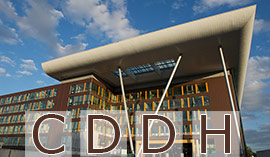Compatibility of draft legislation with the ECHR

At the 9th meeting of the DH-GDR (17-20 November 2015), it was decided that the first exchange of the DH-SYSC will concern the mechanisms for ensuring the compatibility of legislation with the Convention (arrangements, advantages, obstacles). This decision was endorsed by the CDDH at its 84th meeting (see CDDH(2015)R84, para. 8).
At its 1st meeting (25-27 April 2016), the DH-SYSC held a productive exchange of views, on the basis of relevant excerpts of national reports on the implementation of the Brighton Declaration, and written contributions of the experts, on the mechanisms for ensuring the compatibility of legislation with the Convention (arrangements, advantages, obstacles), in response to the following questions:
- What mechanisms have been put in place at national level to ensure the compatibility of legislation (whether draft legislation, laws in force or administrative practice) with the Convention? How do these work (whether or not they are systematic, the competent authorities and any consultations – whether optional or mandatory)? What are the advantages of the mechanism chosen?
- What obstacles have been encountered in establishing or applying these mechanisms? How have these been overcome?
- Is there any assessment (or planned assessment) of the appropriateness and effectiveness of the mechanisms in question? If so, how does this work? What obstacles have been encountered in setting up or carrying out such an assessment.
The overview of this exchange of views was adopted at the 3rd meeting of the DH-SYSC (10-12 May 2017).Written contributions submitted by experts (in English or French) as well as the relevant reference documents prepared by the Secretariat appear below.
- Overview of the exchange of views held by the DH-SYSC at its 1st meeting (25-27 April 2016) on the verification of the compatibility of legislation with the Convention (arrangements, advantages, obstacles)
- Compilation of written contributions concerning mechanisms for ensuring the compatibility of laws with the Convention (arrangements, advantages, obstacles)
- Reference document in view of the first exchange of views of DH-SYSC (1st meeting, 25-27 April 2016) on the implementation of the Convention and the execution of judgments : mechanisms for ensuring the compatibility of laws with the Convention (arrangements, advantages, obstacles)
- Information on Recommendation Rec(2004)5 of the Committee of Ministers on the verification of the compatibility of draft laws, existing laws and administrative practice with the standards laid down in the European Convention on Human Rights extracted from the national reports on the implementation of the Brighton Declaration
Useful links:
Secretary General
Directorate General of Human Rights and Rule of Law
Committee of Ministers
Parliamentary Assembly
Access to Official Documents (TROMSØ CONVENTION)
Department for the execution of the Court's Judgments
European Court of Human Rights
Council of Europe Commissioner for Human Rights
HELP – European Programme for Human Rights Education for Legal Professionals
Online Plateform Human Rights and Business
Chair of the CDDH


























